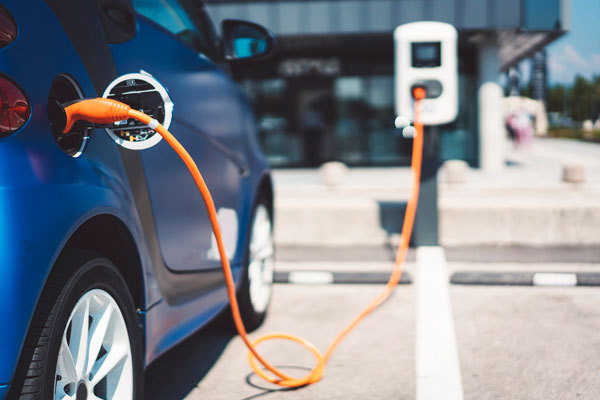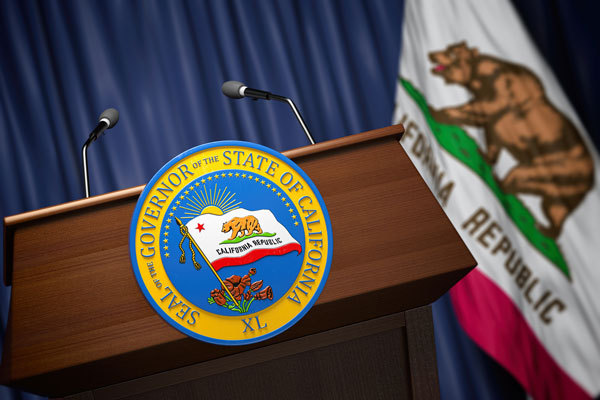Within Clear Sight






September 19, 2022
BY Katie Schroeder
California’s Low Carbon Fuel Standard has been a pivotal piece of regulation for the ethanol industry for many years, helping to make the state a top-shelf market for ethanol. In 2022, the California Air Resources Board was due for a scoping plan, which is done every five years. In doing so, CARB is exploring the option of increasing carbon reduction goals for the LCFS. The proposed goals, as of early August, were an increase from 20% carbon intensity (CI) reduction by 2030 to a 25 or 30% CI reduction in the same timeframe. “The current California Low Carbon Fuel Standard calls for a 20% carbon intensity reduction in transportation fuel by 2030, but today, the fuels being sold in the California marketplace are exceeding the carbon intensity reductions that are established in the law,” says Brian Jennings, CEO of the American Coalition for Ethanol.
Jennings explains what these changes to the LCFS goals could mean for the ethanol industry. “We’re pretty confident that, if they do this, it could be very positive for ethanol,” he says. “It could mean greater demand for ethanol in the nation’s most important fuel market.”
While more aggressive CI targets could lead to more ethanol demand in California, Jennings has some concerns about the “idiosyncrasies” of California’s management of the LCFS in recent years. He explains that CARB has recently favored electric vehicles (EVs) over low-carbon liquid transportation fuels, and recently announced that it will phase in a total ban on the sale of gasoline-powered cars by 2035. However, a University of California Institute of Transportation study funded by the California legislature found that it was impractical to get all internal combustion engines off the road by even 2045, and instead advised that the government replace fossil fuels with biobased fuels alongside EVs.
Scoping Plan Background
Understanding why CARB performs half-a-decade scoping plans puts potential changes to the LCFS in regulatory context. “Really, the scoping plan that CARB develops in five-year intervals is the master plan for greenhouse gas reduction and other related programming in California,” says Graham Noyes, managing attorney at Noyes Law Corp. and executive director of the Low Carbon Fuels Coalition.
Noyes’ law firm specializes in fuel and carbon law, and he works primarily on California transportation, fuel, environmental attribute and clean fuel standard programs, as well as the Renewable Fuel Standard. He explains that the need for the scoping plan came from California’s 2006 Global Warming Solutions Act, or AB 32, which requires CARB to release a report every five years on the state’s efforts in reducing GHGs, and explicitly focus on how effectively these efforts are working to reduce California’s GHG emissions to 1990 levels.
The goal of AB 32—to get to 1990 GHG levels by 2020—was met more than three years ahead of schedule. The next tier is to get to 40% below 1990 emissions levels by 2030—set by SB 32—followed by achieving energy carbon neutrality by 2045, set by an executive order by former Gov. Jerry Brown. To meet the net zero goal, Noyes explains that the state has determined that it needs to eliminate the use of fossil fuels over the next two decades. Noyes says this year’s scoping plan is the first that needs to consider progress on two related goals: carbon neutrality and emissions.
“Whether it’s the advanced clean cars program, the zero EVs program, or all the building electrification programs that we have—efficiency programs—there are literally hundreds of programs, and these all get built into the scoping plan,” Noyes says. “And so, in regard to biofuels, from the biofuels perspective, what was most significant was CARB identifying again that the LCFS is really the most important program in the fuels sector, and one of the most important programs in the transportation sector.”
Sustainable Aviation Fuel in California
Alcohol-to-jet has been a major talking point in the ethanol industry, and California could be a key market for sustainable aviation fuel (SAF) in the future. A recent letter from Gov. Gavin Newsom to CARB requested setting a 20% clean fuels target for the aviation sector.
“We are eagerly pursuing any new market, and the aviation fuel market has emerged as one where I think ethanol as a feedstock fuel could play a very important role in supplying … SAF, absolutely,” Jennings says.
Although SAF provides a great opportunity for ethanol producers, Jennings is cautious of narratives that relegate almost all future ethanol use to the “hard-to-electrify” space, and place too much emphasis on electrification as the chief solution to climate change. “I think that’s nonsense, I think ethanol has a dramatically important role to play in light-duty vehicles—where ethanol only comprises a little over 10% of the market today—and we should be pushing 20, 30% of that market, minimum,” he says. “We have a lot of growth potential in the light-duty vehicle market, and I don’t intend to ever cede that entirely to EVs”
California’s goals run parallel to those of several airlines, which have committed to pursuing a certain percentage of SAF—from an array of raw materials—by various set dates. Cellulosic ethanol, including corn fiber ethanol, has value as a potential feedstock for the production of SAF. Companies like Gevo, SAFFiRE Renewables and LanzaJet have projects underway to pursue SAF production at commercial scale.
“Obviously, alcohol-to-jet is a huge new opportunity, and with the blenders tax credit that’s in the Inflation Reduction Act, it will really accelerate SAF commercialization,” Noyes says. “California has a bill going, which we’re working on, that would further accelerate [SAF use].”
E15 Opportunities and EV Challenges
California is one of the largest and most important markets for E85 in the U.S., but E15 isn’t legal in the state. Jennings explains that though E85’s presence is great in terms of its ethanol volume and price at the pump, it has limited consumer reach because most people don’t own flex-fuel vehicles (FFVs). But E15 can be used in over 90% of the light-duty vehicles on the road today, and after years of rigorous testing, Jennings believes its approval in the Golden State is no longer a matter of if, but when.
Ethanol was an important component in enabling California to meet its GHG reduction goals ahead of schedule, Jennings explains. “Ethanol delivers incredible carbon reduction compared to gasoline,” he says, “so we hope CARB will decide to set a more ambitious carbon intensity target.”
With the potential for an increase in the stringency of the LCFS, now would be the ideal time for E15 to make an entrance. “This is going to give everybody in the marketplace a chance to do more ethanol blending with E15, and I think we’ll see probably the most rapid E15 mobilization that we’ve seen in any state,” Noyes says.
Over the past few years, E15 has been undergoing California’s rigorous multimedia process, which includes various tests to determine if it will be allowed in the state. In late July, CARB stated that it is planning to complete the process in 2024. Noyes says that in July, E15 passed air quality criteria pollutant testing with “flying colors.”
“CARB, through this long-term testing process that’s been going on for several years and has involved a lot of industry investments, has become convinced that E15 is essentially better than E10 or … the gasoline standard for California, but there is still a process to go through,” Noyes says.
E15 has the potential to give obligated parties, such as fuel refineries and importers, a way to meet California’s GHG requirements and give producers more credits per gallon of blended E15 fuel. Noyes explains that if an obligated party blended an ultra-low carbon intensity ethanol enabled with carbon capture and sequestration technology, they may be able to meet their entire LCFS obligation, on a gallon-for-gallon basis, with E15 alone.
“That’s a big slice of the pie … and essentially, that’s going to allow the obligated parties to get a 50% boost in their blending, so I think E15 will very rapidly become the standard fuel in California,” Noyes says.
With California planning to eliminate the use of fossil fuels by 2045, restarting the manufacture of FFVs could be a key step to leveraging the future of E85 in the state. However, Noyes says that efforts to get policy support have struggled to gain traction. He and his team hope to show how E85 can be used to achieve California’s goal of net zero emissions, through blending E85 with renewable naphtha, a byproduct of renewable diesel production that is becoming more widely available.
Final Thoughts
“While California does have a very aggressive ZEV (zero-emission vehicle) program in the light-duty sector, and is working to electrify the medium- and heavy-duty sectors, the state is realistic and performs technology assessments, seeing that in the long-term, low-carbon fuels are essential to decarbonization,” Noyes says.
Noyes believes that the misconceptions about ethanol’s place in a low-carbon future is not only limited to California, but must be debunked in the national arena as well. “We don’t think it’s sufficiently clear in the national conversation that biofuels are an essential part of the solution—that ethanol is an essential part of the solution—and the work everyone’s doing to further decarbonize ethanol and improve is just going to make it more so.”
Author: Katie Schroeder
Contact: katie.schroeder@bbiinternational.com
Advertisement
Advertisement
Advertisement
Advertisement
Related Stories
The U.S. Energy Information Administration maintained its forecast for 2025 and 2026 biodiesel, renewable diesel and sustainable aviation fuel (SAF) production in its latest Short-Term Energy Outlook, released July 8.
XCF Global Inc. on July 10 shared its strategic plan to invest close to $1 billion in developing a network of SAF production facilities, expanding its U.S. footprint, and advancing its international growth strategy.
U.S. fuel ethanol capacity fell slightly in April, while biodiesel and renewable diesel capacity held steady, according to data released by the U.S. EIA on June 30. Feedstock consumption was down when compared to the previous month.
XCF Global Inc. on July 8 provided a production update on its flagship New Rise Reno facility, underscoring that the plant has successfully produced SAF, renewable diesel, and renewable naphtha during its initial ramp-up.
The U.S. EPA on July 8 hosted virtual public hearing to gather input on the agency’s recently released proposed rule to set 2026 and 2027 RFS RVOs. Members of the biofuel industry were among those to offer testimony during the event.
Upcoming Events










